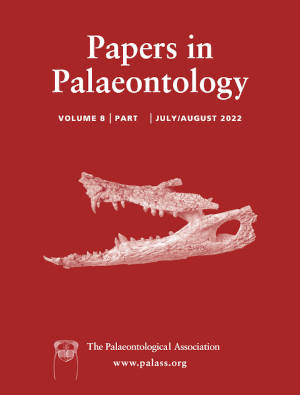Article: Anatomy, palaeoautecology and phylogenetic affinity of tubular Glossolites magnus from the early Cambrian Chengjiang biota, South China
Publication: Papers in Palaeontology
Volume:
8
Part:
6
Publication Date:
2022
Article number:
e1473
Author(s):
Haijing Sun, Fangchen Zhao, and Maoyan Zhu
DOI:
10.1002/spp2.1473
Abstract
Abstract A number of well-preserved fossil taxa from the early Cambrian Chengjiang biota of South China have played important roles in the construction and analysis of the early evolutionary tree of metazoans. Certain other Chengjiang taxa, erected based on limited characters, have yielded little or no information concerning key aspects of their palaeobiology, and consequently their phylogenetic significance has been difficult to assess. One such taxon is the large conical animal Glossolites magnus. Exceptionally preserved new material of this soft-bodied species herein, bearing oral tentacles and internal structures, indicates that G. magnus is not, as previously proposed, a hyolith. This work provides further information about possible biological affinities and palaeoautecology, which still remain open questions.
